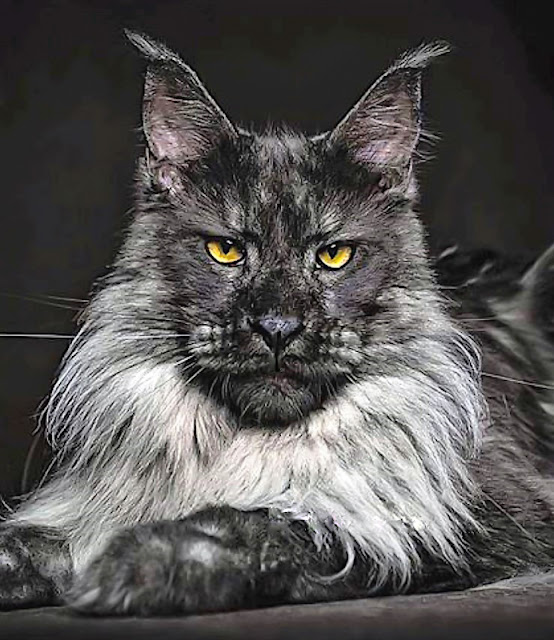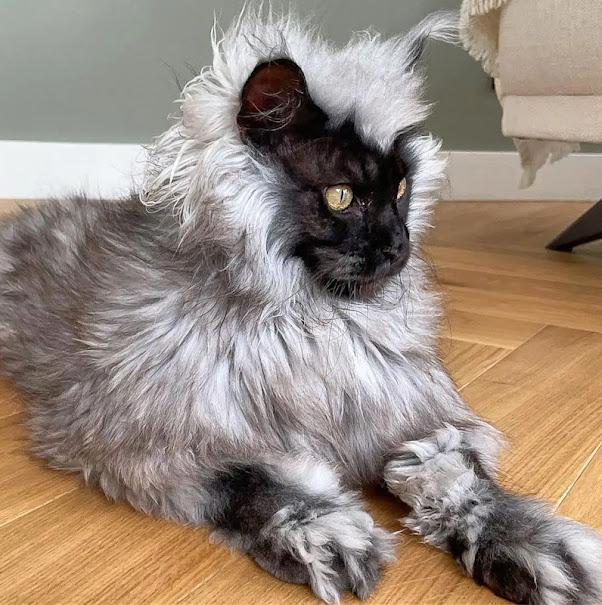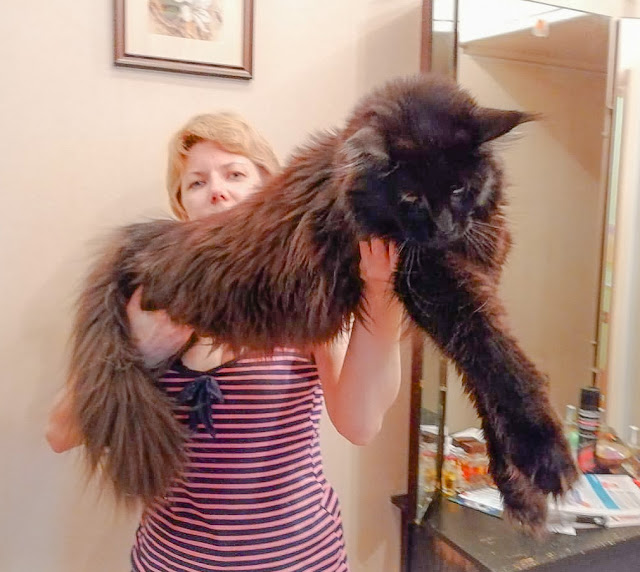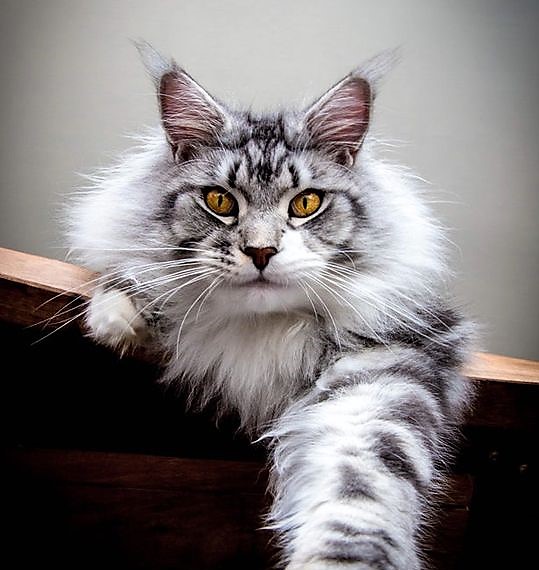Success rate of corrective surgery for patella luxation in Maine Coon cats
.png) |
| Veterinary surgeon. Image: Pixabay (modified). |
As the Maine Coon is genetically predisposed to acquiring patella luxation it is useful for caregivers to have an idea of the success rate of rectification surgery for this condition which is recommended by veterinarians for grade 2-4 patella luxation. The patella is the kneecap and 'luxation' means its dislocation. Basically, the kneecap has moved away from the front of the knee to the side.
- Grade 1 patella luxation means that you can manually push the kneecap out of his groove, but it will return to his normal position once the pressure is removed.
- Grade 2 patella luxation means that the patella will sometimes pop out of the groove on its own, but it moves back to its original position when the leg is rotated and extended.
- Grade 3 patella luxation describes a situation whereby the patella is out of the trochlear groove most of the time but it can be pushed back into the groove with manual pressure.
- And grade 4 patella luxation describes the condition whereby the patella is always out of its groove, and it can't be replaced with manual pressure.
A retrospective study (see title below), which evaluated 85 surgeries on 71 cats and not necessarily Maine Coon cats, found that post-operative complications occurred on 26% of the operations. 20% had major complications and of those 5% had patella luxation occur after the operation described as "patella reluxation". And 6% of the cats had minor complications.
Cats with previous ipsilateral femoral fracture were more likely to suffer complications both major and minor. "Ipsilateral femoral fracture" means, as I understand it, a fracture of the femur on the same side of the body as the patella luxation.
Also, major complications were much more likely with tibial tuberosity transposition (TTT). This describes a surgical procedure to realign the tracking of the patella. So here we are talking about a previous operation which adds complications to the existing operation.
Corrective surgery for hip dysplasia, as I further understand it, does not influence the level of complications for corrective surgery for patella luxation.
 |
| Grey tabby Maine Coon. Image in public domain. |
So, overall, the chance of post-operative complications for patella luxation correction is 26% which is a little over one in five cats having complications. That's not too bad but it is significant.
Clearly, a veterinarian will assess the grade of patella luxation occurring before deciding to suggest an operation as grade 1 luxation can be treated with rest, anti-inflammatory medication and supportive therapy thereby avoiding surgery.
I have presumed (I believe correctly) that it makes no difference if we are referring to Maine Coons or other cat breeds or non-purebred cats when assessing the degree of post-op complications.
There is one last point: general anaesthetics are potentially dangerous with about 1 in 400 cats dying as a consequence. It can also blind cats. You will see various stats on the percentage of cats injured by a general anaesthetic. The stats for cats are much worse than for humans. Why? Less precision? Less care?
RELATED: Tragedy as female cat suffers catastrophic reaction to general anesthetic.
Sources: Petmd.com and a study: Complications associated with corrective surgery for patellar luxation in 85 feline surgical cases published on the Sage Journals website.










Comments
Post a Comment
Please share your Maine Coon experiences.